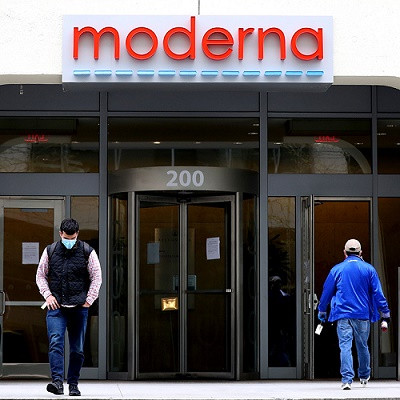
2020-05-19
Visited : 7261
Moderna said a test in 8 healthy volunteers found its experimental vaccine was safe and provoked a strong immune response. It is on an accelerated timetable to begin larger human trials soon.
The first coronavirus vaccine to be tested in people appears to be safe and able to stimulate an immune response against the infection, the manufacturer, Moderna, announced on Monday, offering a glint of hope to a world desperate for ways to stop the pandemic.
The preliminary findings, in the first eight people who each received two doses of the experimental vaccine, must now be repeated in far larger tests in hundreds and then thousands of people, to find out if the vaccine can work in the real world. Moderna’s technology, involving genetic material from the virus called mRNA, is relatively new and has yet to produce any approved vaccine.
Vaccines are now seen as the best and perhaps only hope of stopping or even slowing a disease that has sickened nearly five million people worldwide, killed 315,000 and locked down entire countries, paralyzing their economies.
Dozens of companies and universities are rushing to create coronavirus vaccines, and human trials have already started for several manufacturers, including Pfizer and its German partner BioNTech, the Chinese company CanSino and the University of Oxford, which is working with AstraZeneca.
The potential strength of Moderna’s mRNA approach to vaccine making is that it uses a genetic framework that can be quickly adapted for each new viral threat. The company has said that it is proceeding on an accelerated timetable, with a second phase of tests involving 600 people to begin soon, and a third phase to begin in July involving thousands of healthy people. The Food and Drug Administration gave Moderna the go-ahead this month for the second phase.
If those trials go well, some doses of a vaccine could become available for widespread use by the end of this year or early 2021, Dr. Tal Zaks, Moderna’s chief medical officer, said in an interview. “We’re doing our best to make it as many millions as possible.”
Moderna produced the vaccine in collaboration with the National Institute of Allergy and Infectious Diseases, the institute that is headed by Dr. Anthony Fauci and has been leading the clinical trials. Part of the National Institutes of Health, the agency is involved in research on other experimental coronavirus vaccines. Moderna and Johnson & Johnson have each received roughly half a billion dollars from the U.S. government, to speed the development of a vaccine.
The people vaccinated in Moderna’s Phase 1 study described on Monday were healthy volunteers ages 18 to 55. Their immune systems made antibodies that were then tested in infected cells in the lab and were able to stop the virus from replicating — the key requirement for an effective vaccine. The levels of those so-called neutralizing antibodies matched or exceeded the levels found in patients who had recovered after contracting the virus in the community.
Moderna’s early stage of testing, Phase 1, is continuing, Two more age groups — 55 to 70 and 71 and over — are now being enrolled to test the vaccine. The company did not mention plans to include children in its studies and did not respond to an inquiry about it in time for publication. But Dr. Mulligan said that tests in children were often delayed until a vaccine was shown to be safe in young adults.
Two shots, four weeks apart, are likely to be needed, meaning that however many doses are produced, only half that number of people can be vaccinated.
Moderna said that additional tests in mice that were vaccinated and then infected found that the vaccine could prevent the virus from replicating in their lungs and that the animals had levels of neutralizing antibodies comparable to those in the people who had received the vaccine.
Three doses of the vaccine were tested: low, medium, and high. These initial results are based on tests of the low and medium doses. The only adverse effects at those doses were redness and soreness in one patient’s arm where the shot was given.
Moderna uses genetic material — messenger RNA — to make vaccines, and the company has nine others in various stages of development, including several for viruses that cause respiratory illnesses. But no vaccine made with this technology has yet reached the market.
The idea behind Moderna’s vaccine is to inject the mRNA for part of the spike protein and have it slip into the cells of a healthy person, which then follow its instruction and crank out the viral protein. That protein should act as a red flag for the immune system, stimulating it to produce antibodies that will prevent infection by blocking the action of the spike if the person is exposed to the virus.
“The new technologies for genetic immunization are rapid and produce a product that is highly potent at producing immune responses,” Dr. Mulligan said. “Today’s RNA results confirm that there is great potential.”
Read the original article on The New York Times.